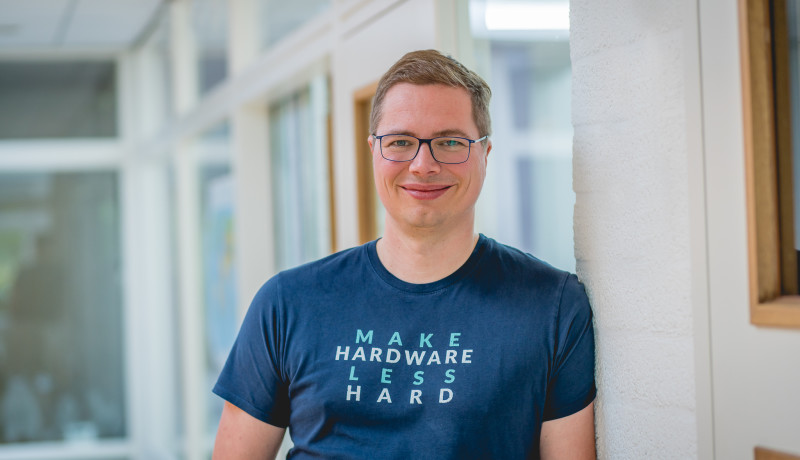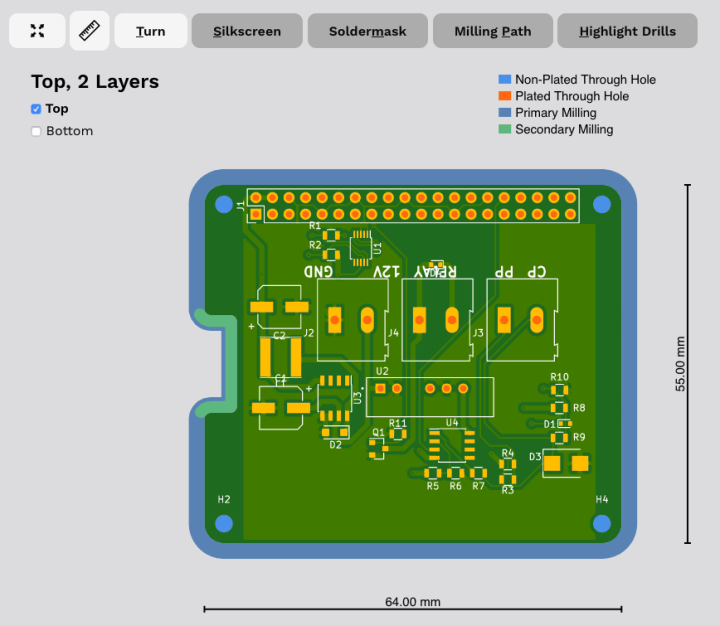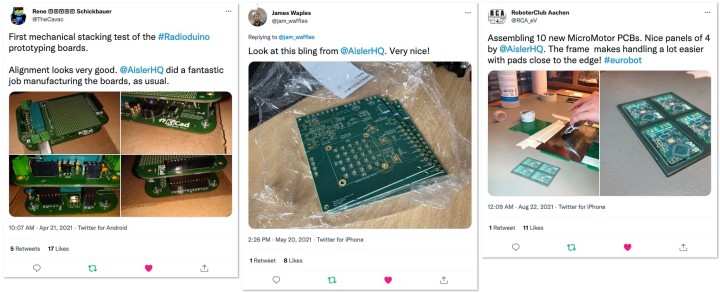Electronics Manufacturing Simplified: Felix Plitzko on Making Hardware "Less Hard"
on

Electronics manufacturing is rarely easy, especially when you are contending with global a crisis like COVID-19 and world-wide material shortages. Fortunately, the manufacturing process can be simplified with the right tools and services. AISLER CEO Felix Plitzko talks about the company's mission to make hardware prototyping, assembly, and series manufacturing “less hard.”
Electronics Manufacturing Challenges
Abate: The electronics industry has changed quite a bit since we last spoke in 2018. The COVID-19 crisis and a global chip shortage are just two of the major challenges facing our industry. How is AISLER doing these days?
Plitzko: We are doing great. Initially, COVID-19 became apparent in February 2020. Since all fabs abroad had been closed longer than expected, we were literally flooded with orders. We quadrupled our numbers. This is where our platform really shined (Figure 1). Since everything from taking on the order to manufacturing the order on the shop floor of our partners has been automated, we were able to scale up easily. By automating the right things and partnering with the right local manufacturing companies, we can provide infinite demand on time and on budget. This year most of the customers that came from abroad fabs later stayed with us — something that never happened in previous years.

PCB. Measuring distances between traces and pads is easy, and inspecting milling paths is simple.
Chip shortages, on the other hand, affected all our customers. However, since we directly hook into every distributor’s inventory and can provide a live overview of the global supply, customers adapted to it by either providing us with leftovers from their inventories or by adjusting their designs accordingly. The beauty of automation really is that we don’t need to have the customer purchase large quantities in advance but really source everything at the moment the customer places the order because we know it is available at that moment.
Abate: What has been your approach to maintaining AISLER’s business since the COVID-19 crisis began in early 2020?
Plitzko: When it became apparent that we had to move into social distancing, we changed into remote work in a snap: we literally picked up all the PC hardware in our office and drove it to every employee’s place. However, we had to make some adjustments on how we organize our business and software development pipeline to ensure they can be done from anywhere. The crisis therefore has helped us professionalize our processes. Interestingly, customers that had come from abroad due to fab closures in February, stayed on-board later. That helped us multiply our impact to drive down costs and improve our service. We still believe that local manufacturing should always be faster, have better service and still be more affordable than anything that is shipped from overseas. The time in our home offices has really helped us focus on that. Today, I can say, we serve over 40,000 engineers worldwide and our customer satisfaction has never been better. So, I guess what we have started when the crisis began starts to pay off.
Hardware Prototyping
Abate: When I interviewed you in 2018, you said AISLER’s goal was to make prototyping “as fun and as effortless as possible” for your customers. Is that true today? Has your mission changed?
Plitzko: We still strive to make prototyping as fun and as effortless as possible, but we have broadened our mission to include assembly and series manufacturing: Make Hardware Less Hard. An engineer should focus on the electronics project’s innovation, not on the manufacturing. We are hence investing in building tools for our customers that allow them to improve their design as soon as possible.
For example, we want to nudge our customers to create simpler designs since it will save them many costs in the manufacturing process later. We created a classification engine that analyses a design according to its complexity. We then communicate to the customer whether it is simple or complex. Customers have started optimizing to get their designs into a simple rating. Simplifying your design before manufacturing allows you to save costs later because manufacturing gets simpler at scale since certain expensive pitfalls can usually easily be avoided. We want to tell our customers as early as possible in the process, so that they don’t wake up having to pay for something that may not have been necessary. Sounds counter-intuitive at first, because we could make so much more money by nudging them into the exact other direction, but we believe for projects to thrive they should be as simple as possible.
Abate: You also mentioned in 2018 that you had delivered prototypes to more than 100 countries. And you noted that one-third of your customers were based in the United States. What about today?
Plitzko: Proximity matters. There are more reasons to this than ever before. Keeping the carbon footprint low for the whole process, from production to logistics is super-important to us. Proximity is also a direct benefit for our customers as it keeps logistics complexity low. There is just so much which could and will go wrong if you ship your goods around the globe compared to the three-hour drive to our next partner fab. All of this leads to strong over-performing growth wherever we are local. Because of this, we are planning to extend our service to even more countries in the EU and to also improve our US operations.
Abate: Let’s turn to your website, Aisler.net. A few engineers on Elektor’s Lab team tried it out and were impressed. Their feedback was positive: Gerbers from KiCad worked well without any problems, the “Blitz” service was fast and simple, and your pricing is affordable. Who are you targeting with your service? Professional engineers? Makers? Is there a “typical” AISLER customer interested in electronics manufacturing?
Plitzko: First of all, we’d like to say thank you to your engineers, we are proud to receive this overwhelming feedback. We are happy that our service is used across many industries, from private people (Figure 2) to public organizations to large companies. Making electronic production available and affordable to everyone also means that it should not matter if it is a business or a private person. Other players in our industry often limit their offering to businesses which is, bluntly said, a discrimination in our perspective. It prevents innovation in the early phases which often happens in the Makerspace around the corner.

Future Plans
Abate: What does AISLER have planned for 2022?
Plitzko: On a broader view, our future couldn’t be looking brighter because we are on the forefront of several megatrends: Firstly, the electrification of everything we know will continue to excel. Secondly, industries will automate more and more supply chains to make them more efficient. Thirdly, we will see a lot more nearshoring of production to be more sustainable and reduce the carbon footprint. Our platform combines all these megatrends, and they are deeply ingrained in our company’s DNA. So, we will continue to invest all our resources into these areas.
On a more specific level, it is our ambition to provide our customers with the best one-stop-shop for all their electronic manufacturing needs. COVID-19 and the material shortage have shown that the best partners are local. Through our network of partners, we can ensure all orders can be fulfilled on budget and on time. Product-wise we will heavily extend our Amazing Assembly offering. Starting off with a one-off prototype and then moving on to a small to mid-scale production with the same partner is a real benefit for a lot of our customers. Making this process as fluent and as error-proof as possible will be a major task in 2022.
In addition to our physical products, we will continue to invest into supporting our customers with our Smart Services. These services are integrated into our online platform and help them improve their designs faster and hence reduce the cost for mass production significantly. We will soon launch a revamped Smart Viewer, have plans to extend the features of our Smart Bom, and will most likely launch additional Smart Services.
All in all, we are really looking forward to 2022! Especially together with our customers and partners, we believe the new year will be a blast!
Want to learn more about Aisler and its services for simplifiying electronics manufacturing? Read the complete version of this interview in the upcoming November 2021 edition of Elektor Industry.



Discussion (0 comments)